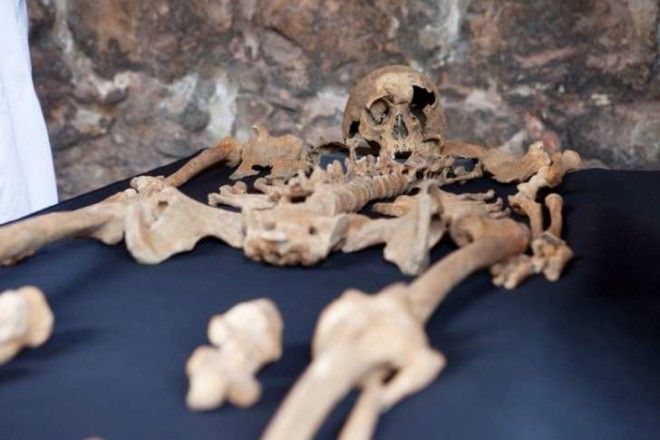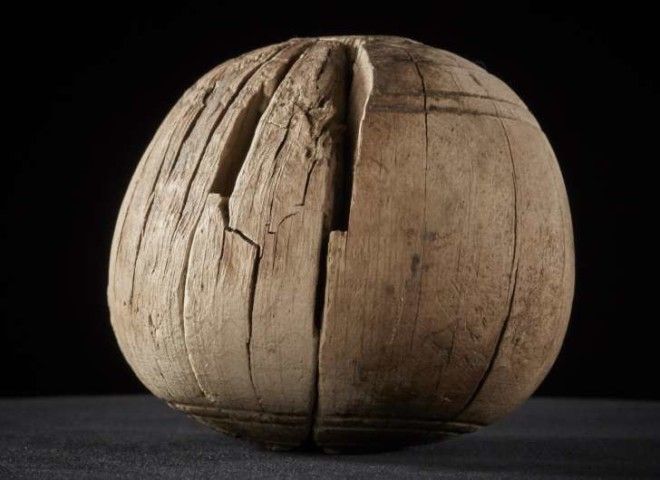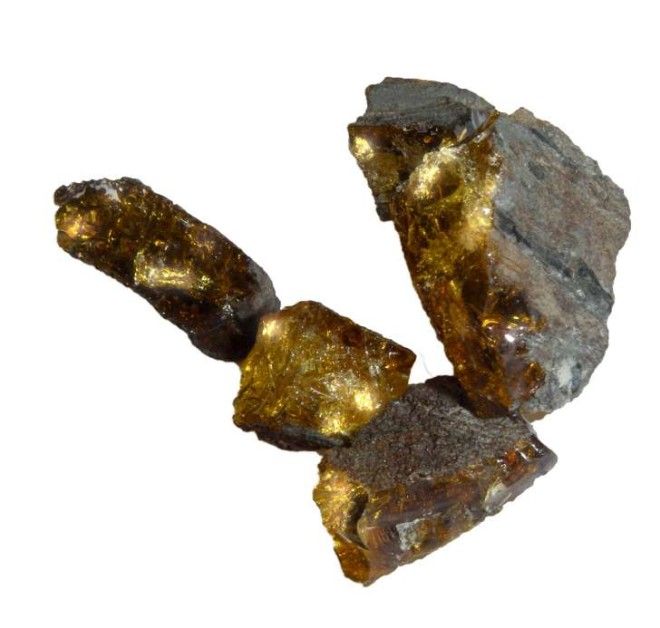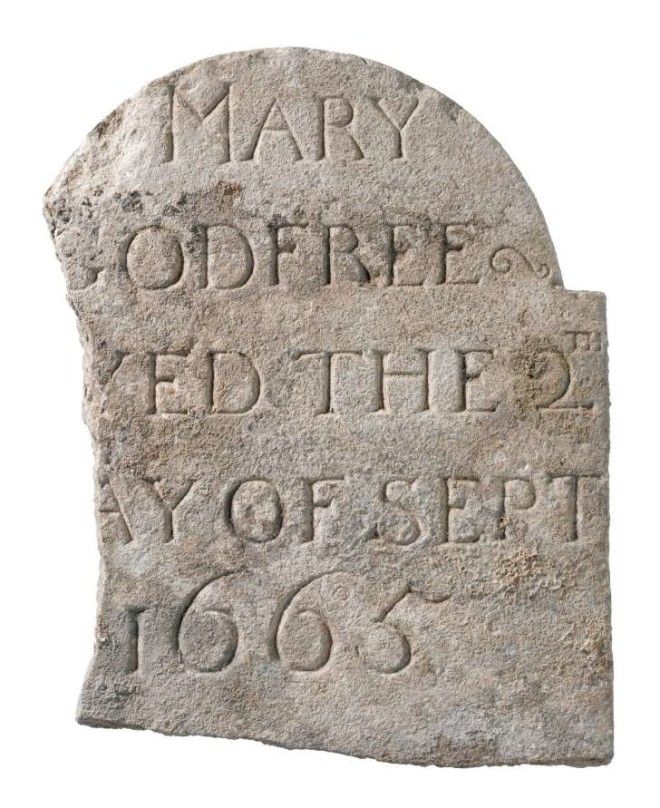Here's a small sampling of the finds.
1. A GRAVEYARD CONTAINING VICTIMS OF THE BLACK DEATH

While excavating London's Charterhouse Square in 2013, archaeologists unearthed dozens of skeletons. Scientists analyzed the remains and discovered that some of them belonged to victims of the Black Death—a.k.a. bubonic plague—who succumbed to pandemics that swept 14th- and 15th-century England.
Teeth contained traces of DNA from the plague bacterium Yersinia pestis, and radio-carbon dating indicated that the burial ground had been used during two outbreaks of plague, one from 1348 to 1350 and another during the 1430s. The skeletons also showed signs of poor diets and hard lifestyles, which might have been contributing factors for why Londoners were so susceptible to the plague.
But the so-called plague pit didn't just contain those who'd succumbed to disease. Not only were some bodies plague-free, "what they found was, not bodies tumbled together as they'd expected, but rather orderly burials with people laid in rows with their bodies orientated in one direction," historian Gillian Tindall told The Guardian. This suggests not all of them died due to plague but from other, more everyday causes.
2. AN 8000-YEAR-OLD STONE TOOL

While digging at North Woolrich, in southeast London, archaeologists discovered a Mesolithic-era site along the Thames where early humans are thought to have crafted tools around 8500 to 6000 years ago. The encampment had traces of campfires and flint scatters, and experts recovered 150 pieces of flint, including an 8000-year-old stone tool.
"This is a unique and exciting find that reveals evidence of humans returning to England and in particular the Thames Valley after a long hiatus during the Ice Age," Crossrail lead archaeologist Jay Carver said in a news release. "It is one of a handful of archaeology sites uncovered that confirms humans lived in the Thames Valley at this time. The concentration of flint pieces shows that this was an exceptionally important location for sourcing materials to make tools that were used by early Londoners who lived and hunted on Thames Estuary islands."
3. A VULGAR VICTORIAN CHAMBER POT

While excavating the Stepney Green station in East London, archaeologists came across a 19th-century cesspit dating to sometime after 1850. The waste hole was filled with tobacco pipes and fragments of pots, including a raunchy Victorian chamber pot. It was once likely kept under a bed, and allowed for its owner to do their business in private during the evening hours.
The pot's bottom contains a cartoon of a grimacing man, encircled by the phrase "Oh what I see/I will not tell." Witty cursive lines once covered the exterior of the broken vessel. Archaeologists were able to decipher one line, which read "… when you in it want to p-s/ Remember they who gave you this."
4. A TUDOR ERA BOWLING BALL (OR SKITTLES BALL)

In addition to the aforementioned cesspit, excavations at Stepney Green also revealed a 15th-century Tudor manor house, complete with moat. Originally home to a rich family named Fenne, it was once called King John's Court or Palace, and later became known as the Worcester House after its owner the Marquis of Worcester.
In 2013, archaeologists excavated the home's foundations, moat, and boundary walls. Inside the moat they discovered a wooden ball made from willow, which was likely either used for bowling or skittles, a European lawn game. Other recovered items included fine glassware, tableware, and cooking and storage vessels, all of which were buried when the moat was either destroyed or filled in.
5. A 55-MILLION-YEAR-OLD PIECE OF AMBER

Slated to open in late 2018, London's new Canary Wharf business district station is located deep below a mixed-use development called Crossrail Place. While tunneling at Canary Wharf was too deep to disturb any buried relics, engineers were still able to retrieve a piece of 55-million-year-old amber from nearly 50 feet below the site's dock bed before construction began. It's the oldest amber to have ever been found in London, and is also notable considering that amber isn't often found in the UK to begin with.
Amber, or fossilized tree resin, takes millions of years and proper burial conditions to form. These preserved relics often contain prehistoric plants and creatures, suspended in the clear material. Experts said they plan to analyze the Canary Wharf amber to learn more about prehistoric environmental conditions and vegetation. The fossil also contained bubbles of trapped gas, which scientists said might yield new scientific insights about global warming.
6. A RARE ROMAN MEDALLION

Archaeologists excavating Crossrail's Liverpool Street site discovered more than 100 mostly-copper Roman coins, along with a handful of silver currency. They ranged in date from 43 CE, during the reign of Emperor Claudius, to 348 CE.
One of the most exciting discoveries among these coins was a rare bronze medallion that was issued to mark the New Year in 245 CE. Presented by Emperor Phillip I (also called Philip the Arab) to a high-ranking government official, it's only the second example of its kind that's ever been found, according to The Guardian.
"You wonder how it got there, who brought it with them, and then how did they lose it—were they heartbroken?" speculated Jackie Keily, a curator at the Museum of London who organized an exhibition of 500 Crossrail artifacts in 2017.
7. A CLUSTER OF ROMAN SKULLS

In 2013, Crossrail workers found Roman pottery and around 20 Roman skulls while working on the Liverpool Street station site. Other Roman skulls had been found in the area, along the historic River Walbrook, and some speculated that they belonged to rebels led by the Iceni warrior-queen Boudicca, who revolted against the Roman Empire during the 1st century CE. But since the newly unearthed skulls were found in sediment that had accumulated in a bend of the river, archaeologists believe that they likely washed out of an eroded Roman cemetery long ago. Moreover, the skulls appear to date to after the uprising.
8. HEADSTONES OF VICTIMS OF THE GREAT PLAGUE

On September 2, 1665, a girl named Mary Godfree succumbed to the plague—one of 95 people from the same church parish who died from the disease that day. She was remembered solely by a line in a burial register until October 2015, when archaeologists discovered her limestone burial stone while excavating the new Liverpool Street Crossrail station site.
The area was originally home to the historic New Churchyard burial ground, also called the Bedlam burial ground. There, archaeologists discovered a mass grave, along with the remnants of 10 stone markers. Godfree's headstone didn't mark the presence of her actual grave, as the headstone had been removed sometime during the 18th century and reused in the foundation of a wall. Still, it revealed new insights into how and where the rediscovered Londoner was buried, and what burial conditions were like during the Great Plague.

